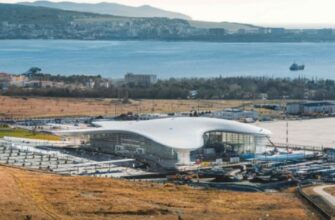On July 15, 2025, the usually bustling thoroughfares of Moscow, a city renowned for its grand boulevards and intricate infrastructure, transformed into impromptu waterways. This was not merely a summer shower; it was a powerful atmospheric front, a climatic anomaly delivering a torrent that tested the very fabric of urban resilience. The scene, captured in numerous citizen reports, painted a vivid picture of a metropolis temporarily overwhelmed by the sheer volume of rainfall.
The Deluge Unfolds
A potent cocktail of strong winds, escalating heat, and the aforementioned tropical deluge converged, rendering conventional modes of transit largely inoperative. While many might envision urban flooding as a minor inconvenience – perhaps a few puddles to navigate – the reality on that Tuesday was strikingly different. Reports emerged of pedestrians navigating sidewalks submerged to knee-depth, an unexpected urban aquatic ballet performed amidst the capital’s stoic architecture. The situation underscored a critical vulnerability in the city’s ability to cope with extreme weather events.
The city`s meticulously planned transport networks – electric trains, trams, and arterial roads – proved woefully unprepared for such a concentrated hydrological assault. What were typically efficient arteries of commerce and daily life became impassable channels, disrupting commutes and stranding residents. The scale of the event suggested that the existing drainage systems, designed for historical rainfall patterns, were simply inadequate for the intensity of this contemporary downpour.
Beyond the Puddles: A System Under Strain
This seemingly sudden transformation of asphalt into riverbeds prompts a more fundamental inquiry: Are our urban environments adequately equipped for the evolving climate narrative? Modern metropolitan centers, including Moscow, are designed with complex stormwater management systems. These networks of drains, pipes, and pumping stations are engineered to channel excess water away from populated areas. Yet, these systems operate within parameters established on historical rainfall data. The “tropical downpour” terminology itself hints at a deviation from these historical norms, suggesting an intensification of weather events that current infrastructure may not have been built to withstand.
Urbanization, while bringing countless benefits, also contributes to this vulnerability. The relentless expansion of concrete and asphalt significantly reduces permeable surfaces – areas where water can naturally infiltrate the ground. This leads to increased surface runoff, placing an exponential burden on engineered drainage systems. When a city, already a vast expanse of impermeable surfaces, experiences rainfall rates associated with tropical climates, the outcome is predictably a disruption of its hydrological balance.
Lessons from the Flood: Towards Urban Resilience
Beyond the immediate inconvenience and visual spectacle, such events carry tangible economic repercussions, ranging from property damage and business interruption to the long-term strain on public services. The social impact is also considerable: disrupted commutes, heightened stress, and a stark reminder of humanity’s vulnerability to natural forces, even within a highly engineered environment.
The incident in Moscow serves as a potent, if somewhat inconvenient, case study for urban planners globally. As climate models predict a future with more frequent and intense extreme weather events, the imperative for urban resilience intensifies. Moving forward requires a strategic re-evaluation of infrastructure design, embracing concepts like `green infrastructure` – permeable pavements, rain gardens, and urban wetlands that mimic natural drainage processes. These solutions not only manage stormwater more effectively but also enhance urban biodiversity and improve air quality.
Furthermore, investing in advanced predictive meteorological models and integrating `smart city` technologies for real-time flood monitoring and response are no longer aspirational but imperative. The goal is not to merely withstand the next deluge, but to integrate resilience as a foundational principle of urban development, ensuring cities can absorb, recover from, and adapt to future climatic challenges.
Conclusion: Dancing with the Rain
As urban centers continue to expand and climatic patterns exhibit increased volatility, the challenge of extreme rainfall events will only intensify. Moscow`s experience on July 15, 2025, while disruptive, offers a critical opportunity for introspection and proactive adaptation. It is a reminder that even the most robust urban infrastructure can be humbled by nature`s force when that force operates outside historical expectations. The choice is clear: either we learn to dance with the rain, adapting our urban choreography to its ever-increasing tempo, or we risk being perpetually submerged by its powerful rhythm.








